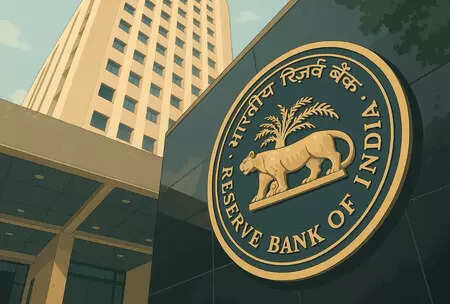Indian Bank’s Annual General Meeting in June approved a special resolution, empowering the bank to raise up to ₹5,000 crore. This capital infusion will be facilitated through various methods, including Qualified Institutional Placement, follow-on public offers, and rights issues.
Indian Bank’s Bold Move: Fueling Growth with a ₹5,000 Crore Infusion
Indian Bank is gearing up for a significant leap forward, having secured the green light to raise a substantial ₹5,000 crore. This isn’t just another financial transaction; it’s a strategic maneuver designed to supercharge their growth trajectory and solidify their position in an increasingly competitive banking landscape. The method? A combination of Qualified Institutional Placement (QIP) and Follow-on Public Offering (FPO), sophisticated tools that allow the bank to tap into both institutional and retail investment pools.
What does this infusion mean for Indian Bank, and more importantly, what does it signal for the broader Indian economy? Let’s delve into the details.
Why Raise Capital Now?
Banks, much like living organisms, require constant nourishment to thrive. In their case, that nourishment comes in the form of capital. This freshly acquired ₹5,000 crore will serve as vital fuel, enabling Indian Bank to achieve several key objectives. Primarily, it will bolster their capital adequacy ratio, a crucial metric that reflects the bank’s ability to absorb potential losses and maintain financial stability. Think of it as building a stronger foundation for future endeavors.
Secondly, the capital will provide ample ammunition to expand their loan portfolio. With increased lending capacity, Indian Bank can actively participate in financing infrastructure projects, supporting burgeoning businesses, and empowering individual borrowers. This translates directly into economic stimulus, contributing to overall growth and development. They can specifically increase lending toward priority sectors and scale up the overall lending portfolio, a key strategy for banks looking to expand their influence.

QIP and FPO: Decoding the Financial Jargon
So, how exactly will Indian Bank raise this substantial sum? The answer lies in two distinct, yet complementary, financial mechanisms: QIP and FPO.
Qualified Institutional Placement (QIP) allows Indian Bank to sell shares directly to qualified institutional buyers, such as mutual funds and insurance companies. This is a relatively quick and efficient way to raise capital, avoiding the complexities and regulatory hurdles associated with a full-fledged public offering.
Follow-on Public Offering (FPO), on the other hand, involves issuing new shares to the general public, including existing shareholders. This allows retail investors to participate in the bank’s growth story and share in its future success. The decision to combine QIP and FPO demonstrates a balanced approach, catering to both institutional and retail investors. For investors, understanding the nuances of IPOs and FPOs is crucial. You can learn more by researching investment strategies on reputable financial sites.
The Ripple Effect: Impact on the Indian Economy
Indian Bank’s capital raising initiative isn’t just an internal affair; it has far-reaching implications for the Indian economy. By strengthening its financial position and expanding its lending capacity, the bank can actively contribute to:
* Infrastructure Development: Funding crucial infrastructure projects, such as roads, bridges, and power plants, which are essential for sustained economic growth.
* MSME Growth: Supporting Micro, Small, and Medium Enterprises (MSMEs), the backbone of the Indian economy, by providing access to credit and financial services.
* Job Creation: Fostering economic activity and creating employment opportunities across various sectors.
Furthermore, a financially robust Indian Bank can play a pivotal role in promoting financial inclusion, bringing banking services to underserved communities and empowering individuals to participate in the formal economy. This aligns with the government’s broader agenda of promoting inclusive growth and reducing income inequality. Indian Bank is also focusing on improving its digital offerings, a move that aligns with the broader trend of digitization in the Indian financial sector.
A Vote of Confidence
The decision by Indian Bank to raise ₹5,000 crore through QIP and FPO underscores its confidence in the future. It’s a bold step that signals ambition, strategic foresight, and a commitment to contributing to India’s economic progress. The market’s response to this initiative will be closely watched, as it will provide valuable insights into investor sentiment towards the Indian banking sector.
This move should attract significant investor interest, given Indian Bank’s solid performance and strategic importance. Learn more about Indian Bank’s leadership and vision for growth by reading their annual reports.
Final Thoughts on the Indian Bank Initiative
Ultimately, Indian Bank’s capital raising endeavor is more than just a financial transaction; it’s an investment in the future. By strengthening its financial foundation and expanding its reach, the bank is positioning itself to play a pivotal role in India’s ongoing growth story. It will be interesting to track how they will strategically allocate this capital to drive maximum impact and returns.







